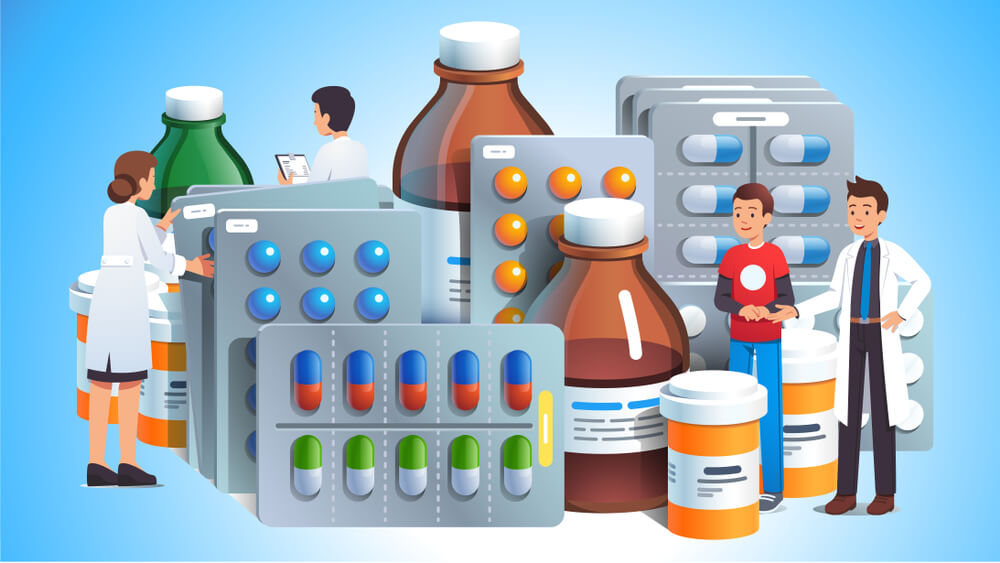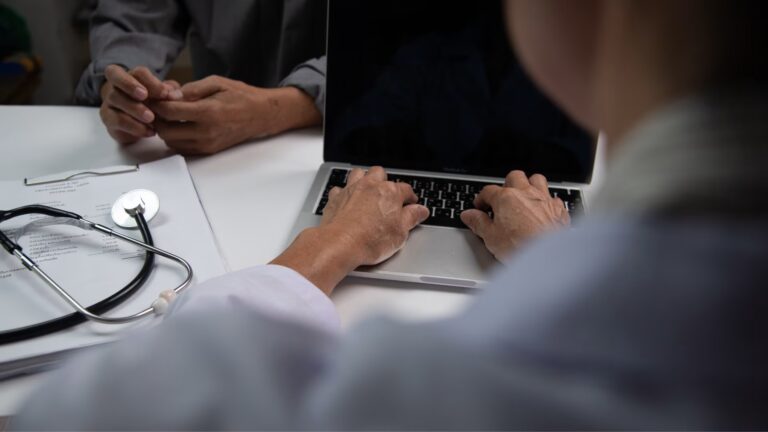Patient safety is paramount in healthcare, and medication administration plays a significant role. It is critical to administer medication carefully to avoid any mistakes that could have severe consequences for patients. Unfortunately, according to the National Health Service (NHS), medication errors affect around 237 million prescriptions annually, contributing to approximately 712 deaths yearly.
Moreover, these figures highlight the critical need for healthcare professionals to implement effective strategies that enhance the safety of medication administration. A level 4 medication administration course can help significantly handle and control the consequences.
This blog aims to delve into safe medication administration. You will explore the top strategies to help mitigate errors, improve patient outcomes, and ensure a safety culture in healthcare settings across the UK.
Table of Contents
- The Importance of Safe Medication Administration
- Top Strategies for Safe Medication Administration
- Patient Identification and Verification
- Medication Reconciliation & Effective Communication
- Proper Medication Storage and Handling
- Double-Checking and Verification
- Patient Education and Counseling
- Medication Storage, Labelling & Guidelines
- Error Reporting and Continuous Improvement
- Five Rights of the Medication Administration
- Why Enrol in the Medication Administration Level 4 Course?
- Conclusion
- FAQ
Let’s get started by understanding the importance of safe medication administration.
The Importance of Safe Medication Administration
Ensuring safe medication administration is crucial in healthcare settings. Medication errors can have severe consequences, including adverse drug reactions, treatment delays, and even life-threatening patient situations.
So, by implementing effective strategies and protocols, healthcare providers can significantly reduce the occurrence of medication errors, enhance patient outcomes, and foster a culture of safety.
Top Strategies for Safe Medication Administration
There are many strategies to ensure safe medication Administration. Let’s go through them one by one.
Patient Identification and Verification.
One of the fundamental strategies for safe medication administration is accurate patient identification and verification. Before administering any medication, healthcare providers must confirm the patient’s identity using at least two unique identifiers. It includes checking the patient’s full name, date of birth or medical record number. This helps prevent medication errors and ensures the proper medication is given to the right patient.
Medication Reconciliation
Medication reconciliation is a necessary step in safely administering medications. It involves comparing the patient’s current medication regimen with any newly prescribed medications. It helps to identify discrepancies, such as omissions, duplications, or interactions.
Moreover, by conducting thorough medication reconciliation, healthcare providers can minimise the risk of adverse drug reactions.
In addition, you can check out our medication administration level 4 course to stay current and understand all the fundamentals of safe medication administration.
Effective Communication
Clear and effective communication is essential in medication administration to prevent errors and misunderstandings. Healthcare professionals should communicate vital information about medications, dosage, and administration techniques accurately and concisely.
This includes using standardised terminology, documenting medication administration details promptly, and ensuring proper handoff communication during shift changes.
CTA: Medication Administration Level 4
Proper Medication Storage and Handling
Safe medication administration extends beyond the act of administering the medication itself. Healthcare providers must ensure proper medication storage and handling to maintain efficacy and prevent contamination.
Besides that, medications should be stored according to their specific storage requirements, such as temperature and light conditions, and expiration dates should be closely monitored to avoid expired medications.
Double-Checking and Verification
One of the effective strategies to minimise medication errors is to perform a double-checking and verification process. Healthcare professionals should not rely on others or assume that everything is correct.
They should further verify the medication order, dosage, and patient information before administering medications. This extra step can act as a safety net. It can detect and correct any potential errors that may have occurred in the previous stages of medication delivery.
Patient Education and Counseling
Another vital way to ensure safe medication administration is to teach patients about their medications. Healthcare providers should explain to patients what their medications are for, how much and how often to take them, what possible side effects they may have, and what to avoid while taking them. This helps patients participate in their care, improving compliance and overall medication safety.
Ensuring Proper Medication Storage and Labelling
Ensuring proper medication storage and labelling is crucial for safe medication administration. Proper storage helps maintain the integrity and effectiveness of medications. In addition, accurate labelling provides essential information for healthcare professionals and patients.
Moreover, medications should be stored according to their specific requirements, such as temperature, humidity, and light exposure. Some medicines need refrigeration, while others must be kept at room temperature. Storing medications in their original packaging or containers is essential to avoid confusion. Proper storage areas should be clean, organised, and secure.
On the other hand, Labelling plays a critical role in medication safety. Each medication container should be clearly labelled with the name of the medication, dosage strength, expiration date, and special instructions or warnings.
Furthermore, labels should include the patient’s name, date of dispensing, and the prescribing healthcare provider’s details. Proper labelling helps verify the medication’s identity, dosage, and expiration date before administering it.
Adherence to Medication Administration Guidelines
Following established medication administration guidelines and protocols is crucial for safe practice. Healthcare providers should be familiar with the specific administration requirements for different medications, such as the route of administration, recommended injection sites, and infusion rates. Adhering to these guidelines minimises the risk of errors and promotes consistent and safe medication administration practices.
You can take our medication administration level 4 course to stay up to date and understand all the fundamentals of safe medication administration.
CTA: Medication Administration Level 4
Error Reporting and Continuous Improvement
Creating a safety culture requires a commitment to error reporting and continuous improvement. Healthcare organisations should encourage and support the reporting of medication errors and near-misses. By analysing these incidents, identifying root causes, and implementing corrective measures, healthcare providers can continuously improve their medication administration processes and enhance patient safety.
Employing the “Five Rights” of the Medication Administration
The “Five Rights” of medication administration are principles that healthcare professionals employ to ensure the safe and effective delivery of medications. These rights consist of:
- Right patient: The medication must be administered to the correct patient. Healthcare professionals verify the patient’s identity using at least two unique identifiers, such as their full name and date of birth.
- Right medication: The correct medication must be given to the patient. To ensure accuracy, healthcare professionals double-check the medication against the prescription or medication order.
- Right dose: The medication must be administered correctly as prescribed by the healthcare provider. The dosage is carefully calculated based on the patient’s weight, age, condition, and other factors.
- Right route: The medication must be administered appropriately. Typical routes include oral (by mouth), intravenous (IV), intramuscular (IM), subcutaneous (SC), or topical (applied to the skin).
- Right time: The medication must be given at the correct time as specified by the healthcare provider. Adhering to the prescribed schedule is crucial to maintain therapeutic levels in the patient’s body.
Why Enrol in the Medication Administration Level 4 Course?
If you want to learn & improve your medication management skills, the Medication Administration Level 4 course is a great choice. This course will teach you everything you need to know about handling medicines safely in social care settings. You will learn to assess risks, obtain consent, and follow service standards when administering medication.
Additionally, you will also learn about the six rights of medication administration, covert administration, recording procedures, storage, and medication disposal. This course will help you understand drug formulation and administration methods to provide the best care to your patients.
Conclusion
Safe medication administration is a critical aspect of healthcare that requires attention, protocol adherence, and continuous improvement. Implementing strategies such as accurate patient identification, medication reconciliation, effective communication, proper storage and handling, double-checking, patient education, and adherence to guidelines can significantly reduce medication errors and enhance patient safety.
Additionally, creating a culture of error reporting and continuous improvement helps identify areas for enhancement and fosters a commitment to patient well-being. By prioritising safe medication administration, healthcare providers can ensure optimal patient outcomes and contribute to a safer healthcare system in the United Kingdom.
FAQ
What is the role of technology in safe medication administration?
Technology plays a vital role in safe medication administration. Electronic prescribing systems, barcode scanning, and automated dispensing machines help reduce medication errors by improving accuracy and facilitating proper medication identification.
What are the 7 rules for safe medication administration?
Nurses follow the “7 rights” of medication administration to ensure safety: right patient, drug, dose, time, route, reason, and documentation. These principles safeguard patients and prevent medication errors.
What is medication safety?
Medication safety involves measures to minimise risks in medication use, preventing errors and harm to patients. It includes accurate prescribing, dispensing, administration, and communication among healthcare providers. The focus is on protecting patients from preventable harm and ensuring effective treatment outcomes.
Video: Patient Safety: Medication Administration
How can patients actively participate in safe medication administration?
Patients actively participate in safe medication administration by maintaining an updated medication list, communicating openly with healthcare providers, asking questions for clarification, and diligently following prescribed instructions while promptly reporting concerns.
What should healthcare providers do during a medication error?
In a medication error, healthcare providers should prioritise patient safety and take immediate action. This includes notifying the healthcare team, documenting the incident, assessing the patient for adverse effects, and implementing appropriate interventions to mitigate harm.



 " alt="What is safeguarding vulnerable adults?" />
" alt="What is safeguarding vulnerable adults?" />
 " alt="3 Essential Communication Skills for Health and Social Care" />
" alt="3 Essential Communication Skills for Health and Social Care" />
 " alt="8 Caldicott Principles: The Key to Data Protection Explained" />
" alt="8 Caldicott Principles: The Key to Data Protection Explained" />

